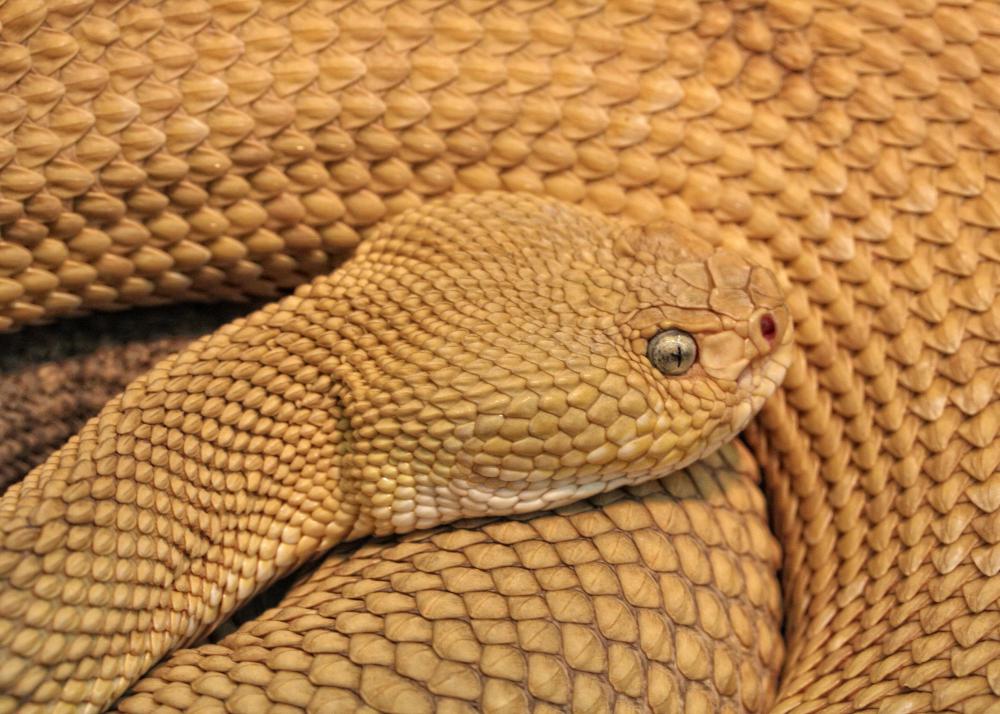At WiseGEEK, we're committed to delivering accurate, trustworthy information. Our expert-authored content is rigorously fact-checked and sourced from credible authorities. Discover how we uphold the highest standards in providing you with reliable knowledge.
How do I Treat a Snake Bite?
A snake bite can be fatal, and even a bite from a non-venomous snake will require basic wound care. Even without initial symptoms, a snake bite can still be dangerous. The victim should be safely transported to a hospital as quickly as possible. While waiting for medical care, there are several basic first aid techniques that can be administered.
Use the afflicted limb as little as possible. Excessive use hastens the absorption of the venom. Never use alcohol to treat a snake bite wound. Alcohol increases the size of local blood vessels, resulting in more venom absorption. Avoid using ice as it only results in frostbite.

Keep the snake bite below the heart, as this his slows the spread of venom throughout the body. Wash the bite with warm soapy water. Remove clothing and jewelry from around the snake bite. When swelling occurs, these objects will constrict blood flow and kill tissue.
Check the bite for broken teeth or other debris. Never cut a snake bite. Sucking the venom out is not recommended, and can cause an infection or local tissue damage. Apply a splint to the limb, and ensure it won’t cut off circulation in the event of swelling.
Frequently check fingers and toes to ensure they are pink and moving. Increased pain and numbness in the limb may be the result of no circulation. In this case, the splint should be removed and re-applied, moderately looser.

For elapid species such as cobras and coral snakes, wrap an elastic pressure bandage on the bitten limb. Start at the base of the limb and work towards the snake bite. This will slow the spread of venom without restricting blood flow. Be prepared for an increased chance of shock.
If possible, attempt to photograph the snake. If the snake has been killed, carefully move it into a container to transport to the hospital. Snakes have a bite reflex for up to an hour after death. Do not take risks to photograph or capture the snake, as many medical crews can identify the snake by the bite.

To prevent a possible snake bite, wear long pants and boots that cover the ankle. Avoid walking through tall brush and swampy areas where snakes often live. If you encounter a snake, do not approach it, even if you believe it is harmless. When cornered, a snake will feel threatened and will be more likely to bite.
AS FEATURED ON:
AS FEATURED ON:













Discussion Comments
Other things to remember: make sure you tell the ER personnel when the bite occurred, as near as you can. The elastic bandage method is gaining popularity, even for pit viper bites, since it keeps the venom from getting to the heart as quickly. Also, if you don't have ambulance transport, call the hospital as quickly as possible to alert them to what is going on. That way, they can have antivenin ready when you arrive.
Post your comments